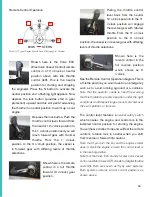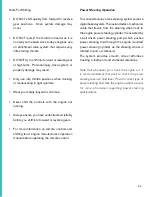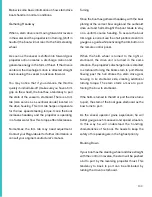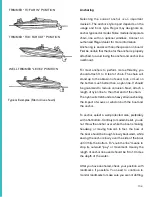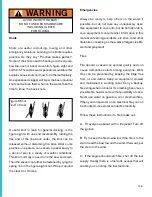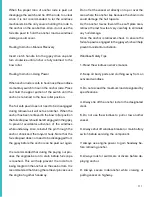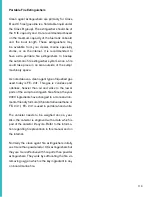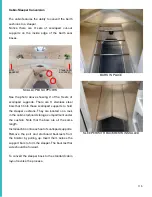
106
Figure 8 Knot
Tied To Cleat
Knots
Knots are useful in docking, towing and other
emergency situations. Learning to tie knots requires
practice. As they say “ Practice makes perfect”.
Some of the knots used in boating are the square,
bowline, anchor bend, clove hitch, figure eight and
half hitch. There are several periodicals available that
explain various knots and how to tie them effectively.
An experienced skipper will know the basic nautical
knots and will use them when on the water. Take the
time to know the basic knots.
A useful knot to learn for general docking is the
figure eight with one end reversed. By turning the
free end of the line back under, the knot can be
released without disturbing the boat. After some
practice one person can secure a vessel easily to
a dock or pier in a variety of weather conditions.
This knot normally is used to tie the bow and stern.
Then the vessel can further be fastened by tying the
spring line in the figure eight knot. Wrap it around
the cleat 2 or 3 times.
AVOID INJURY OR DEATH!
DO NOT USE DECK HARDWARE
INCLUDING CLEATS
FOR TOWING.
WARNING
Emergencies
Always be ready to help others on the water if
possible, but do not take any unnecessary risks.
Use equipment to save a life, but do not risk a life to
save equipment. Consult earlier information in this
manual concerning accidents, etc. Also, read other
literature concerning on the water emergencies. Be
alert and prepared!
Fires
Fire aboard a vessel can spread quickly and can
cause tremendous alarm among everyone. Most
fires can be prevented by keeping the bilge free
from oil and debris. Keep all equipment stowed
and maintained in working order. Carry a backup
fire extinguisher on board. If something becomes a
possible fire hazard, remove that possibility at once.
Never use water on gasoline, oil or electrical fires.
When you dump water on an electrical fire you can
be shocked since water conducts electricity.
Follow these instructions if a fire breaks out:
A. Fit everyone aboard with a life jacket. Turn off
the ignition.
B. Try to keep the fire downwind. If the fire is to the
stern, head the bow toward the wind. If forward, put
the stern to the wind.
C. If the engine should catch fire, shut off the fuel
supply. Usually there is a fuel tank access that will
enable you can crimp the fuel feed line.
Summary of Contents for LS4C
Page 1: ...REGAL LS4C OWNER S MANUAL OCTOBER 2018 EDITION...
Page 29: ...29 Navigation Light Rules...
Page 43: ...43 Navigation Rules...
Page 46: ...46 Lateral Aids...
Page 47: ...47 Channel Markers Regulatory Markers...
Page 49: ...49...
Page 50: ...50...
Page 78: ...78...
Page 123: ...123 INSTALLING TRAVEL STORAGE COVER Travel Storage Cover Typical Continued...
Page 194: ...194...
Page 195: ...195...
Page 196: ...196...
Page 197: ...197...
Page 198: ...198...
Page 200: ...200 PROPRIETARY RIGHTS HH1 HH2 HH3 HH4 HH 5 HH2 HH3 HH5 HH4...
Page 201: ...201...
Page 202: ...202...
Page 203: ...203...
Page 204: ...204...
Page 205: ...205...
Page 206: ...206...
Page 207: ...207...
Page 208: ...208...
Page 209: ...209...
Page 210: ...210...


